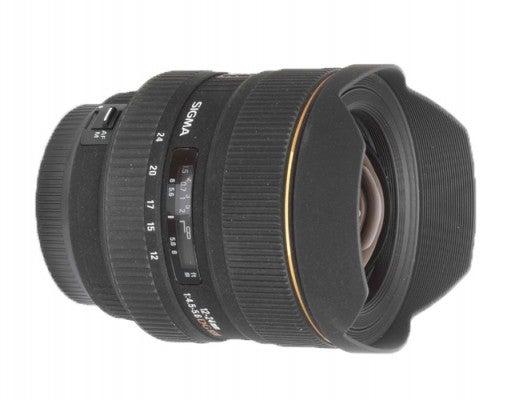'Lens Of The Year 04-05' according to its EISA award, the Sigma 12-24mm EX DG HSM covers both full frame and APS-C too. Does it provide the best for both worlds? The What Digital Camera Sigma 12-24mm EX DG lens review investigates...
Sigma 12-24mm EX DG HSM Review
EISA gave the Sigma 12-24mm EX DG HSM its European Lens of the Year Award for 2004-5 on account of the zoom’s impressive 12mm minimum focal length and compatibility with both full-frame and APS-C cameras.
Being a full-frame zoom this lens is larger than its APS-C (DC) stable-mate – further bulk comes from the non-removable petal-shaped lens hood, which needs an adapter-collar to be slid over it before the lens cap can be fitted. This is a rather inconvenient arrangement and it is not clear why Sigma hasn’t simply supplied a bespoke slip-on lens cap. It is true that the lens cap and adapter can be slipped-off as a single item but they then tend to separate. If I owned this lens I would be tempted to glue the lens cap onto the adapter!
The fixed lens hood also means that filters cannot be fitted to the front of the lens so Sigma has helpfully provided a gelatine slot at the rear. Users who are not accustomed to fitting gelatins may find this solution rather awkward and should move the lens to its 24mm setting to avoid touching the rear element. Regardless of dexterity, polarising filters are out of the question since they cannot be rotated.

These niggles aside, Sigma’s 12-24mm full-frame handles very well. The forward manual-focusing ring is available at all times in AF mode (on Canon, Nikon and Sigma cameras) and is nicely geared for accurate use – the rearward zoom ring requires a slight shift of grip but again has a very pleasing feel.
Automatic focusing is carried out internally so there is no need to keep fingers clear of the focusing ring. A distance window is provided together with depth-of-field markings for both maximum and minimum focal-length settings should they be needed.
Although it is not evident from the resolution curves, there is some colour fringing at the 12mm setting but the effect is slight and is likely to go unnoticed in most situations.
Overall, full-frame users will enjoy this lens but APS-C cameras are better served by its DC sibling, which offers better performance at a lower price.





